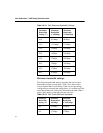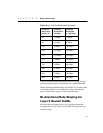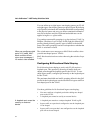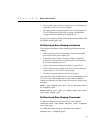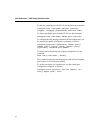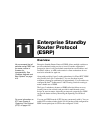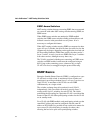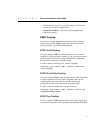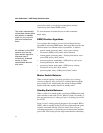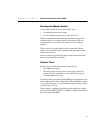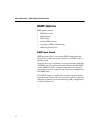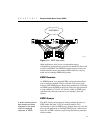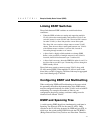
170
Intel
®
NetStructure™ 480T Routing Switch User Guide
• For a VLAN to be recognized as participating in ESRP, the
assigned IP address or the IPX NetID for the separate switches
must be
identical. Other aspects of the VLAN, including its
name, are ignored.
• ESRP must be enabled on the desired VLANs for each switch.
ESRP cannot be enabled
on the VLAN default.
• Enterprise Discovery Protocol (EDP) must be enabled on the
ports that are members of the ESRP VLANs (the default setting is
enabled).
To verify EDP status, use this command:
show ports <portlist> info {detail}
Determining the ESRP Master
The ESRP master switch (providing Layer 3 routing and/or Layer 2
switching services for a VLAN) is determined by these factors:
• Active ports—The switch with the greatest number of active
ports takes highest precedence. A load-sharing port group is
considered a single port.
• Tracking information—In a typical Layer 3 router redundancy
configuration (which has the ESRP switches routing to a
cloud or
routed backbone) you can use the VLAN that links the switch to
the routed backbone as part of the criteria for determining the
master/slave failover.
Three types of tracking are supported for determining whether
the switch performing the master ESRP function has
connectivity to the outside world.
• VLAN – The number of active ports in a tracked VLAN.
• IP route – The number of available IP learned routes.
• Ping – Tracks ICMP ping connectivity to specified devices.
Other factors being equal, whenever one or more links to the
routed backbone fails for the master, ESRP fails-over to the
switch that has the most active ports associated with the routed
backbone. If there are no active ports associated with the
tracked VLAN, ESRP forces the switch to remain in slave state,
because no backbone connectivity is available.
• ESRP priority—This is a user-defined field. The range of the
priority value is 0 to 254; a higher number has higher priority. The



